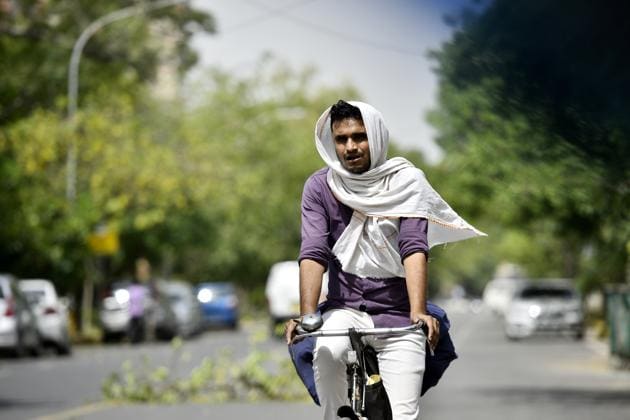2017 was fourth consecutive hottest year for India: IMD
Warming of temperatures has been a global phenomenon, with the World Meteorological Organisation (WMO) on Thursday declaring 2017 as one of the three hottest years on record.
The India Meteorological Department’s (IMD) draft climate summary says that 2017 was the fourth warmest year on trot after 2016, 2015, and 2014. The average temperature across the country last year was 0.71 degrees C above the 1971-2001 average, the summary said.

The post-monsoon period from October to December in 2017 was the third warmest since 1901, according to data from the department.
The IMD considers January and February as winter months because temperatures in these two months have been historically cooler, according to D S Pai, a scientist at IMD.
In popular perception, however, winter starts from November and lasts till February.
Warming of temperatures has been a global phenomenon, with the World Meteorological Organisation (WMO) on Thursday declaring 2017 as one of the three hottest years on record.
“2016 still holds the global record, whilst 2017 was the warmest year without an El Niño, which can boost global annual temperatures,” the world body said.
The year 2016 remains the hottest year on record , with temperatures 1.2 degrees Celsius above preindustrial era. “Global average temperatures in 2017 and 2015 were both 1.1degrees Celsius above pre-industrial levels.The two years are virtually indistinguishable because the difference is less than one hundredth of a degree, which is less than the statistical margin of error,” WMO said.
However, according to meteorologists, in the absence of an El Nino, an unusual warming of Pacific Ocean surface that contributes to warmer temperatures, 2017 is the hottest year on record.
The greatest departures in temperatures in 2017 were in the January-February period. The trend is likely to continue this winter, as the IMD says the weather would be warmer than usual.
“Our analysis of 117 years of temperature data clearly indicates rapid warming of winter months. In 2017, the average temperature in winter was close to three degrees higher than the baseline of 1900-1930,” Chandra Bhushan, deputy director general of Centre for Science and Environment, said.
“Literature tells us that such rapid temperature rise has huge implications on our environment, especially agriculture and water. But we are neither studying nor preparing for these impacts,” he stressed.
The IMD had forecast that the November-February months will be less colder in most states of India, with maximum temperatures to be higher by almost one degree Celsius.
In India, yearly mean temperatures rose by 0.66 degrees Celsius every hundred years during 1901-2017, with maximum temperatures rising faster than the minimum.




